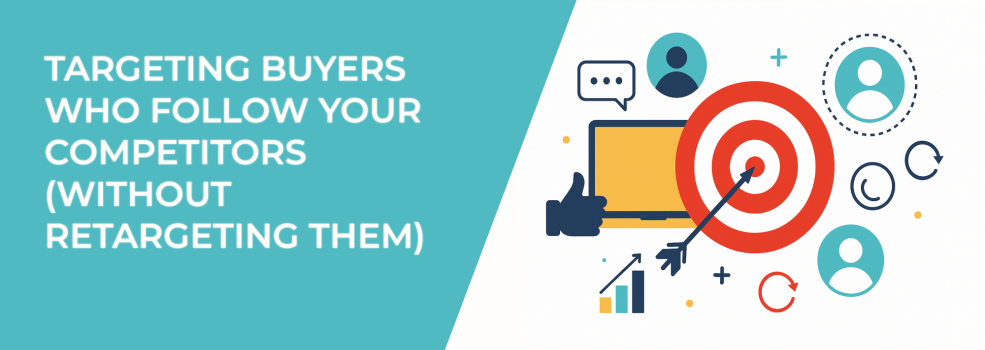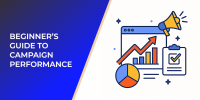Your competitors’ followers are some of the hottest prospects you can reach. They’re already aware of your industry. They’re already interested in products or services like yours. And most importantly — they’re likely to buy.
But how do you reach them without relying on limited retargeting options? That’s where smarter targeting strategies come in. Let’s break them down.
Why Competitor Followers Are So Valuable
Competitor audiences matter because they’ve already crossed the first hurdle: awareness. Unlike cold audiences, these people don’t need convincing that your solution category is important. They already follow similar brands, read their posts, and join industry discussions.
In marketing terms, they’re warm. Not strangers. Not random browsers. They’re people who are actively paying attention.
If you want to understand more about how different campaign structures can capture that attention, check out 5 Common Facebook Campaign Structures And When to Use Each One.
Directly Target Competitor Followers
Here’s the big advantage many advertisers don’t know about: LeadEnforce lets you directly target people who follow Facebook pages and groups.
That’s something you can’t do with Meta Ads Manager alone. Native targeting options are limited to interests, demographics, and behaviors. They don’t give you the precision of saying, “I want people who follow this specific page” or “I want members of this particular group.”
With LeadEnforce, you can:
-
Target competitor followers — show ads to people who already follow and engage with your competitor’s Facebook group or page.
-
Target niche groups — reach active members of communities where your ideal buyers share tips, ask questions, and look for solutions.
-
Run tests — compare which competitor pages or groups deliver the best conversions, then scale the winners.
This feature is especially powerful for smaller brands competing with established players. Instead of wasting budget on broad interest categories, you’re putting ads directly in front of highly engaged users who already care about your niche.
Think of it like standing in the same room as your competitor’s prospects — while they’re already in a buying mindset.
If you’d like a deeper dive into finding the right communities, see How to Find and Target Facebook Groups Relevant to Your Business.
Layer Your Targeting for Better Results
Targeting competitor followers is powerful. But when you add layers, it becomes unstoppable.
You can combine competitor followers with:
-
Behaviors — frequent buyers, device users, or app activity.
-
Interests — other influencers, tools, or related categories.
-
Demographics — job titles, industries, locations, or age ranges.
This keeps your audience sharp, focused, and less wasteful.
If you want more insight into how to keep your ad spend efficient, check out How to Know if You’re Overspending on Facebook Ads (or Not Spending Enough).
Use Lookalike Audiences
Competitor audiences are a great start. But don’t stop there. You can expand your reach with lookalike audiences built from your own customer data.
Here’s a simple process:
-
Upload your customer or subscriber list.
-
Create a lookalike audience.
-
Combine it with competitor followers for maximum precision.
The result? You’ll reach people who resemble your best customers while also connecting with your competitors’ most loyal fans.
If you want to understand why this approach works so well, read The Secret Sauce Behind Facebook Lookalike Audiences That Actually Convert.
Target Competitor Keywords in Search
Competitor keyword targeting in search ads is another smart tactic. Buyers often search for:
-
“Competitor name pricing”
-
“Competitor name reviews”
-
“Competitor name alternatives”
When those searches happen, you want to be there. Even if you can’t use competitor names in your ad copy, you can still highlight your advantages: better pricing, faster results, or unique features.
This tactic pairs well with social ads. You reach competitor followers in their Facebook feed, then meet them again when they search on Google.
Address Their Pain Points Directly
Competitor followers don’t just follow for fun — they’re looking for solutions. And that means they might also be facing frustrations.
Ask yourself:
-
Is the competitor’s product too complex?
-
Do they charge more than most buyers can afford?
-
Are customers frustrated by slow support or missing features?
Use these pain points in your ad copy and landing pages. When competitor followers see your ad, they’ll instantly recognize you’re speaking to the problems they already feel.
For more on refining messaging, see How to Match Ad Messaging to Buyer Awareness Levels on Facebook.
Retarget for More Impact
You can’t retarget competitor followers directly. But you can retarget people who click your competitor-focused ads or visit your landing pages.
Think of it as a funnel:
-
Awareness — use LeadEnforce to target competitor pages and groups.
-
Engagement — they click, read, or explore your brand.
-
Retargeting — you follow up with ads that build trust and drive conversions.
This layered funnel approach keeps buyers warm until they’re ready to take action.
For more advanced strategies, read Retargeting Leads Who Didn’t Submit: Timing, Messaging, and Format.
Practical Tips to Maximize Results
Here are a few quick wins to make competitor targeting work harder for you:
-
Test multiple competitor pages and groups — some convert far better than others.
-
Rotate creatives often — competitor audiences see a lot of ads, so keep yours fresh.
-
Use different ad angles — focus on speed, value, simplicity, or long-term reliability.
-
Monitor cost-per-click closely — competitor audiences can be competitive in ad auctions.
-
Always refine — drop underperforming audiences and reinvest in the ones that convert.
If you’re curious about testing approaches, see Facebook Ad Testing Made Easy: Templates for All Funnel Stages.
Final Thoughts
Targeting competitor audiences doesn’t have to be guesswork. With LeadEnforce, you can reach Facebook group and page followers directly, layer that targeting with behaviors and lookalikes, and combine it with search campaigns and retargeting.
Your competitors have already gathered an audience. Now you can step in with smarter targeting, sharper messaging, and better offers.
Why let them keep all the attention?

